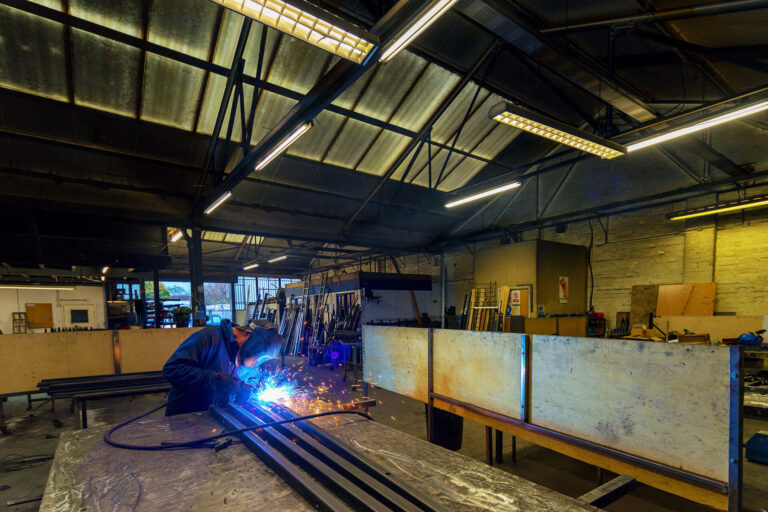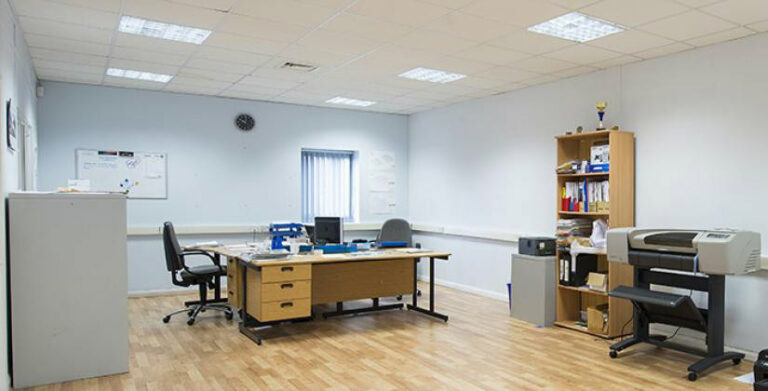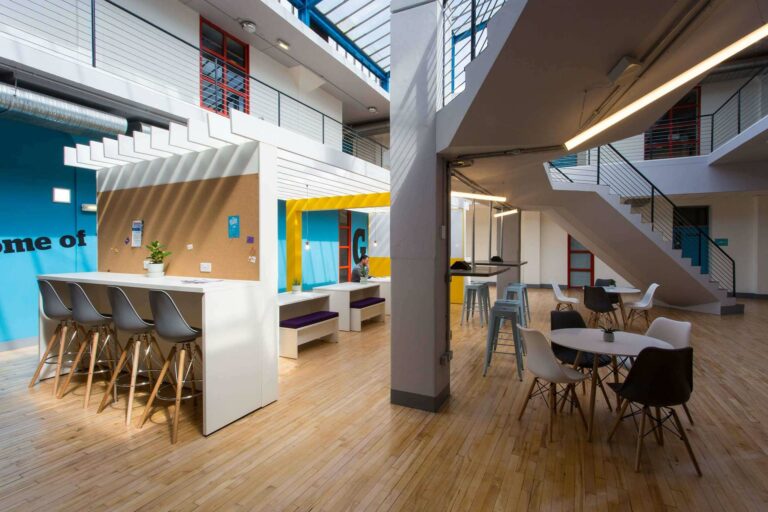Hybrid working could be the future for many employees. Even once the pandemic is over, some workers could continue to split their time between working from home and in the office, particularly where remote working has proved viable. CIPD research shows that employers expect 37% of employees to be working from home regularly post-pandemic, compared to just 18% before COVID-19.
As we approach the time when many businesses will return to the office, this post explores the hybrid work model as a potential option for your organisation. Join us as we consider why businesses might want to adopt hybrid working and how to overcome the challenges associated with this style of workforce management.

What does hybrid working mean?
Before digging deeper into the benefits and challenges of this new way of working, let’s first consider what we mean by a hybrid work model.
Hybrid working refers to a split between working remotely and in an office environment. There are two main models: some organisations choose to have set days in and out of the workplace, whilst others opt to have certain teams working from home and others at the office.
Designated-day hybrid working
A popular choice even before coronavirus, this type of hybrid working sees employees come in for in-office meetings and collaborative projects on some days but stay at home to focus on individual work on others. This model of working offers the best of both worlds and has been adopted by companies such as the LA-based personal finance site, The Smart Investor.
The split workforce hybrid model
Alternatively, some organisations choose certain groups to work remotely whilst others go into the office. In practical terms, this might look like sales and customer service staff coming into work whilst the remaining departments connect in from home. The idea of splitting up your staff between home and office workers is contentious (and for good reasons which we’ll consider below).
Why consider hybrid working for your organisation?
With the focus of attention shifting back to the workplace for many businesses, there are plenty of reasons to consider adopting a part remote / part office model in your organisation. Hybrid working strikes the ideal balance between structure and adaptability, togetherness and independence.
In doing so, this approach to working improves:
- Mental health;
- Productivity and work rate;
- Team working and connectedness;
- Retention rates and employee loyalty.
Now to take a closer look at each of these in turn.
Mental health benefits
In their own ways, solely remote and solely office-based work can both chip away at your team’s mental health. Working from home offers the potential for a better work-life balance without the need to commute, yet it’s easy to slip into feeling isolated without any real social contact. On the flip side, meeting colleagues at the office reduces loneliness but comes at the expense of less relaxation time surrounding the working day.
The evidence suggests that a balanced approach is the right option for your workforce’s mental wellbeing. According to a recent Deloitte survey, 43% of employees consider reduced stress and better mental health to be the main benefit of workplace flexibility. With work-from-home burnout on the rise throughout the pandemic, hybrid working could be the perfect solution for your organisation moving forwards.

Increased productivity
Different tasks are suited to different environments: when collaborating together on a project or taking part in team-building activities, your staff will get the most out of the experience in a shared workspace setting. Individual tasks such as writing reports, on the other hand, can be completed more effectively when away from the distractions of the office.
Both types of work are equally important to the day-to-day running of your business. With a purely remote or purely office-based approach, however, either social or solitary tasks tend to suffer. A hybrid working model allows you to meet in the middle and carry out a full range of work in the most productive way. This is supported by a recent Stanford study which found that partly remote call centre staff completed 13.5% more calls than those who were in the office every day.
Keeping everyone connected
One of the fundamental flaws of working from home is that teams can quickly grow distant from each other without regular contact in person. The knock-on effect on your company culture can be unbalancing, eating away at the relationships, interactions, and work approaches that make your organisation unique and help it to thrive.
With a mixture of days in and out of the office, your staff will get the chance to bond and share experiences that keep them connected. Don’t underestimate the importance of this – better relationships between employees make for better job satisfaction, teamwork, and collaborative efforts towards the shared goals of your organisation.
Improved staff retention
Through a combination of all of these perks, a hybrid model helps to make your staff more loyal and reduces the chance that they’ll leave the organisation. With a balanced, flexible split between remote and office work, employees feel their needs are understood, they’re being treated fairly and will reward you with increased retention rates (another key finding from the Stanford research). Employees are your most valuable asset and all of this means less outlay on recruitment and training, plus better continuity within the business.
Overcoming the challenges of a hybrid work model
Though few and far between, hybrid working is not without its difficulties. This section looks at solutions to the main problems presented by the hybrid model and how your business can identify and easily overcome them.
Create a level playing field
A key challenge arises when there’s a division in the workforce, with some staff at home and others at the office. Employees working in the office will naturally be at an advantage in a number of ways:
- They’ll have more opportunity to socialise with colleagues, helping them to become a more integral part of the team;
- The outcomes of impromptu discussions may not be shared with remote staff;
- Office staff will feel more included during meetings, giving them greater confidence to share their ideas.
To overcome this difficulty, pick designated days when your people come in. If this isn’t possible with social distancing, encourage office-based employees to communicate in meetings using video call software. This avoids a conference room dynamic that excludes remote workers, preventing office-goers from becoming an ‘in-group’ set apart from the at-home crowd.
Accommodate differences and preferences
Hybrid working patterns can also alienate those who find it hard to work from home. The pandemic has already highlighted the challenges faced by parents, carers and even pet owners, who have to look after others whilst trying to work remotely, as well as those who struggle due to cramped living environments or lack of access to stable Wi-Fi. Equally, some may just prefer to work either at home or in the office.
A catch-all answer to these problems is to be flexible and allow staff the option to choose their own workplace. Your teams will be grateful to you for empowering them with this level of choice, making them more satisfied with the company and more likely to give back through their commitment and hard work.
Over the course of this article, we’ve explored the various approaches to hybrid working, why you should consider a hybrid model, and solutions to the challenges it can present.
BizSpace provides flexible offices near residential areas across the UK with on-site parking, making your employees’ commutes that much easier. With a flexible office space near home, our customers can choose to stay close to home some days without having to actually be at home, helping to facilitate an even easier hybrid work model. Get in touch today to learn more.
Author:
BizSpace
BizSpace is the UK’s leading provider of regional flexible workspace. For over 20 years we have been offering office, studio and workshop units to a wide range of businesses in convenient regional locations across the country. We are owned by Sirius Real Estate, a commercial property operator, that is supporting us on a journey to significant growth.
More BizSpace News

Blog
Finding a Small Industrial Unit or Workshop to Rent
Let’s be honest with each other, finding a ‘perfectly sized’ industrial unit for your business isn’t exactly fun. It’s time-consuming,…
Find out more
Blog
Designing your ideal office: 8 top tips
Focus on comfort and practicality when designing your office space, considering layout, light, furniture, clutter and accessories.
Find out more
Blog
What is a Satellite Office?
Businesses are now finally able to return to some sense of normality in our post-COVID society. There has been plenty…
Find out more